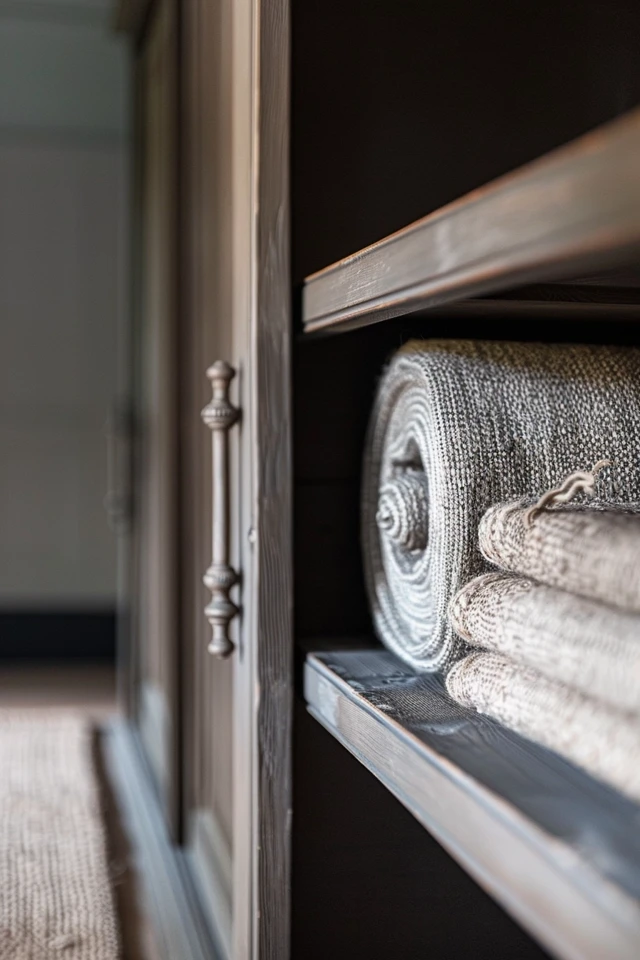When it comes to storing carpets and rugs, it is important to follow proper storage methods to preserve their integrity. Improper storage can lead to shape distortion, pest infestation, and unwanted odors. Knowing how to store a rug correctly is crucial in maintaining its beauty and quality.
It is recommended to roll the rug instead of folding it to avoid creases and damage to the fibers. Storing the rug vertically in a corner can help maintain its shape. Avoid wrapping the rug in plastic as it traps moisture, leading to potential mold buildup. It is also important to periodically unroll the rug to check for moisture, mold, and insect infestations.
Thoroughly cleaning the rug and protecting it from moths and other insects are essential steps in preparing it for storage. Finally, storing the rug off the ground in a cool and dry environment is crucial for its preservation.
Key Takeaways:
- Roll the rug instead of folding it to avoid damage.
- Store the rug vertically in a corner for shape maintenance.
- Avoid wrapping the rug in plastic to prevent mold buildup.
- Periodically unroll the rug to check for moisture and insect infestations.
- Clean the rug thoroughly before storing it.
Preserving your carpet in storage is essential to keep it in top condition. Follow these carpet storage guidelines and recommendations to ensure its longevity and beauty. By storing your carpet properly, you can avoid shape distortion, pest infestation, and unpleasant odors. Remember to clean the rug thoroughly, protect it from moths and other insects, and store it in a cool and dry environment. With these best carpet storage practices, you can enjoy your rugs for years to come.

Thoroughly Clean The Rug
Before storing the rug, it is important to give it a thorough cleaning. This ensures that any dirt, dander, or other microscopic particles are removed, helping to maintain its quality and prolong its lifespan. One of the most effective ways to clean a rug is by vacuuming it. This method helps to remove surface dirt and debris that may have accumulated over time.
When cleaning your rug, it is crucial to follow the manufacturer’s specifications and guidelines for the best results. Different types of rugs may require specific cleaning methods to avoid damaging the fibers or colors. By adhering to these instructions, you can ensure that the cleaning process is suitable and safe for your rug.
If you have a woven or braided rug, consider using a zippered mesh laundry bag to protect it during the washing process. This will help prevent any tangling or damage to the rug’s delicate fibers. For larger braided rugs, you can opt to sponged-clean them using a mild carpet-cleaning foam.
Handmade, hand-knotted, antique, and oriental rugs require special care due to their intricate designs and delicate materials. In such cases, professional cleaning may be necessary to avoid any potential damage. By entrusting these rugs to experts, you can ensure that they are handled with the utmost care and expertise.
If you have coir, sisal, rush, or grass rugs, you can scrub them gently using a soft brush and soapy water. This method helps to remove dirt and stains while safeguarding the rug’s natural fibers. For fur, sheepskin, and hair-on hides, shaking unscented talcum powder onto the rug and brushing it through the hair can effectively clean and refresh their appearance.
Regular cleaning not only helps to maintain the cleanliness and beauty of your rug but also prevents the buildup of allergens and contaminants that could affect your indoor air quality. By incorporating proper rug cleaning into your routine, you can enjoy a clean and hygienic living environment.

Key Rug Cleaning Guidelines:
- Vacuum the rug to remove dirt and debris.
- Follow the manufacturer’s cleaning specifications.
- Use a zippered mesh laundry bag for woven or braided rugs.
- Sponged-clean larger braided rugs with carpet cleaning foam.
- Consider professional cleaning for delicate or valuable rugs.
- Scrub coir, sisal, rush, or grass rugs with a soft brush and soapy water.
- Clean fur, sheepskin, and hair-on hides with unscented talcum powder.
- Regularly clean rugs to maintain their quality and lifespan.
Protect The Rug From Moths And Other Insects
To keep your rug safe from moth and insect damage while in storage, it’s crucial to take preventive measures. Start by having the rug professionally cleaned to remove any food particles, dust, and moisture that can attract pests. Additionally, apply a specially designed insect and moth repellent for fabrics. Be cautious and avoid using mothballs as they can be toxic and potentially harm the rug’s integrity.
Properly wrapping the rug in a protective material, such as acid-free paper, washed cotton sheeting, or muslin sheeting, provides an extra layer of defense. Avoid storing the rug directly on the storage surface and instead, use wooden pallets or risers to elevate it off the ground. Regularly inspect the rug for signs of mildew, moth larvae, or any damage during storage. Remember, prevention is key to preserving the rug’s quality.
For optimal protection, store the rug in a climate-controlled space without windows. This helps maintain its quality by preventing damage from excess humidity, insects, and sun exposure. By following these preventive measures, you can effectively safeguard your rug from moths and insects, ensuring its longevity and beauty for years to come.


